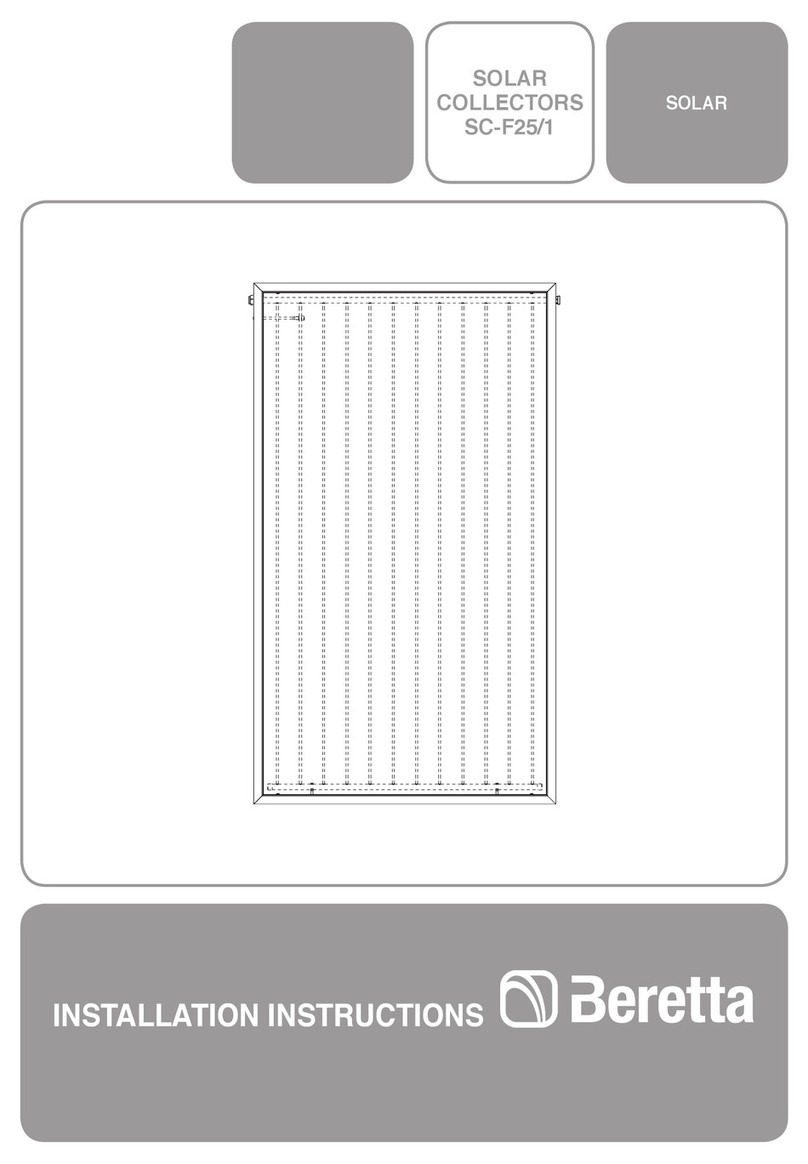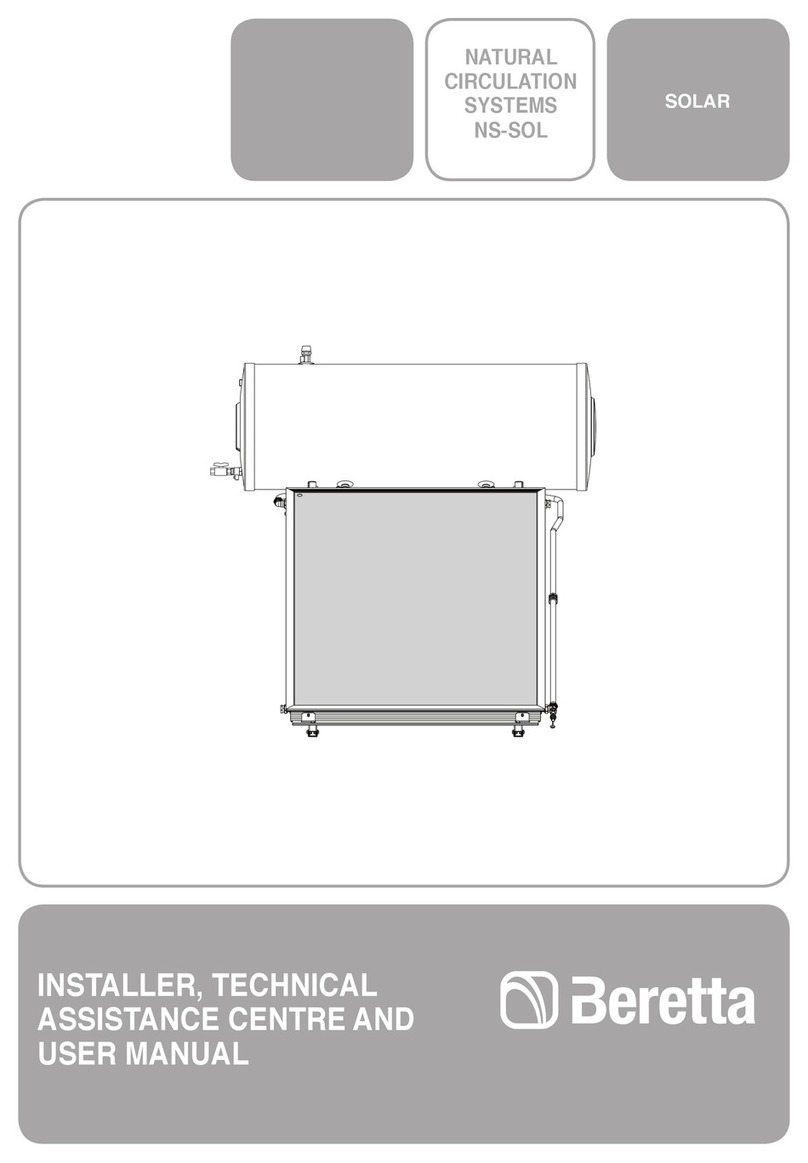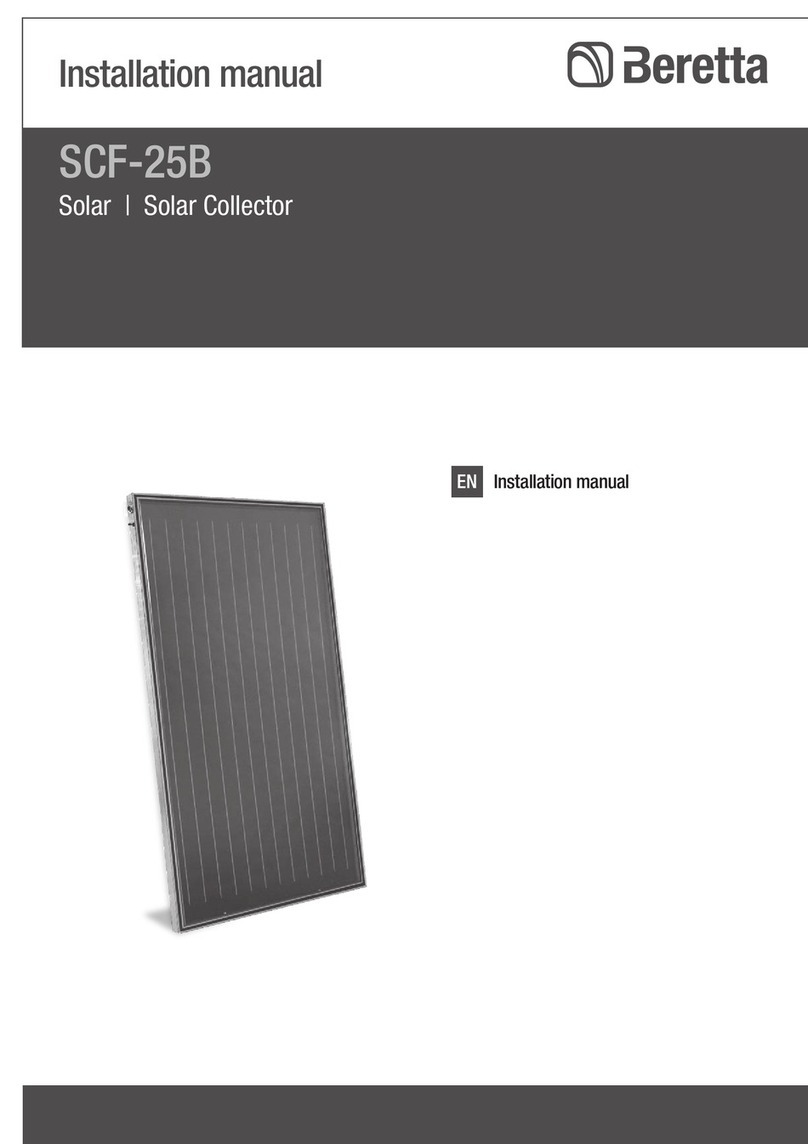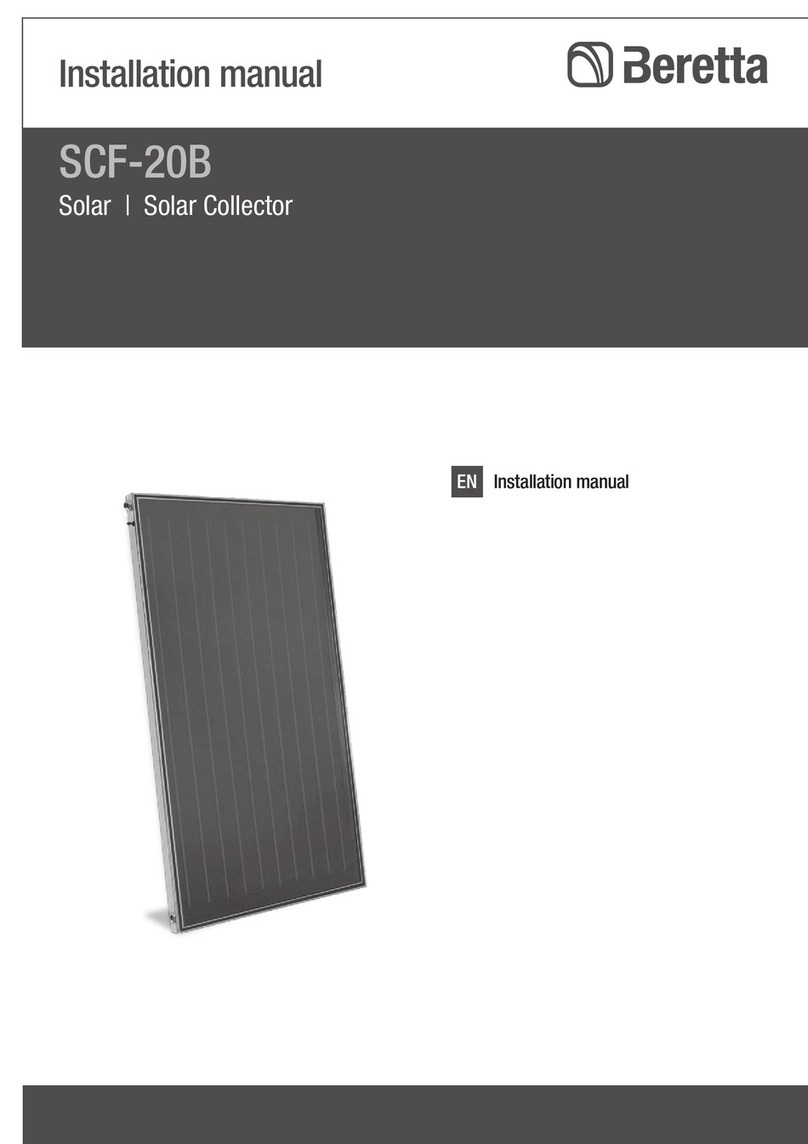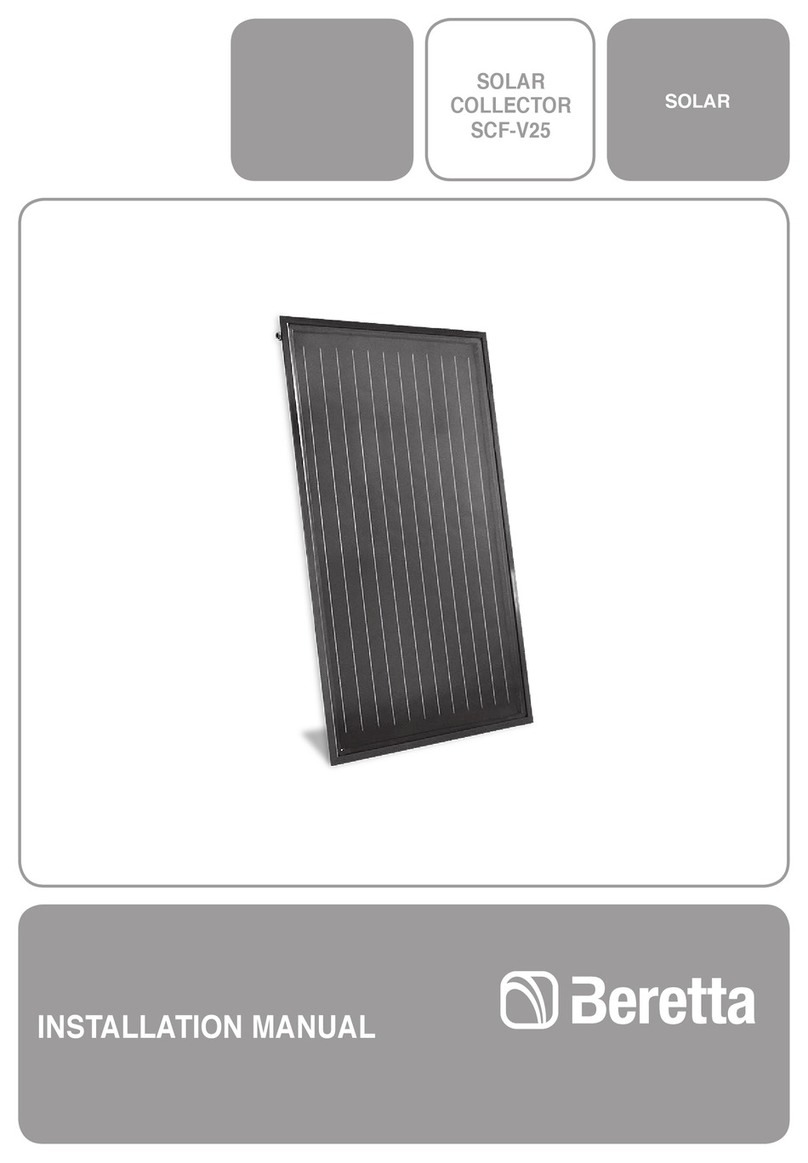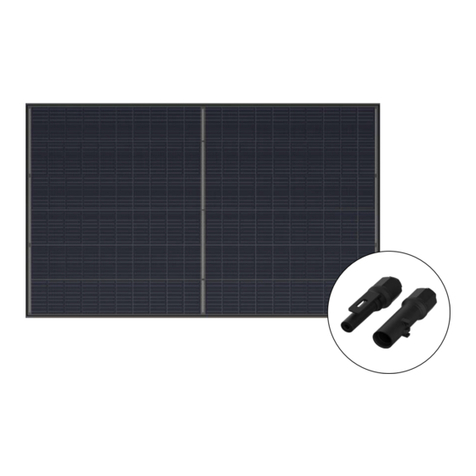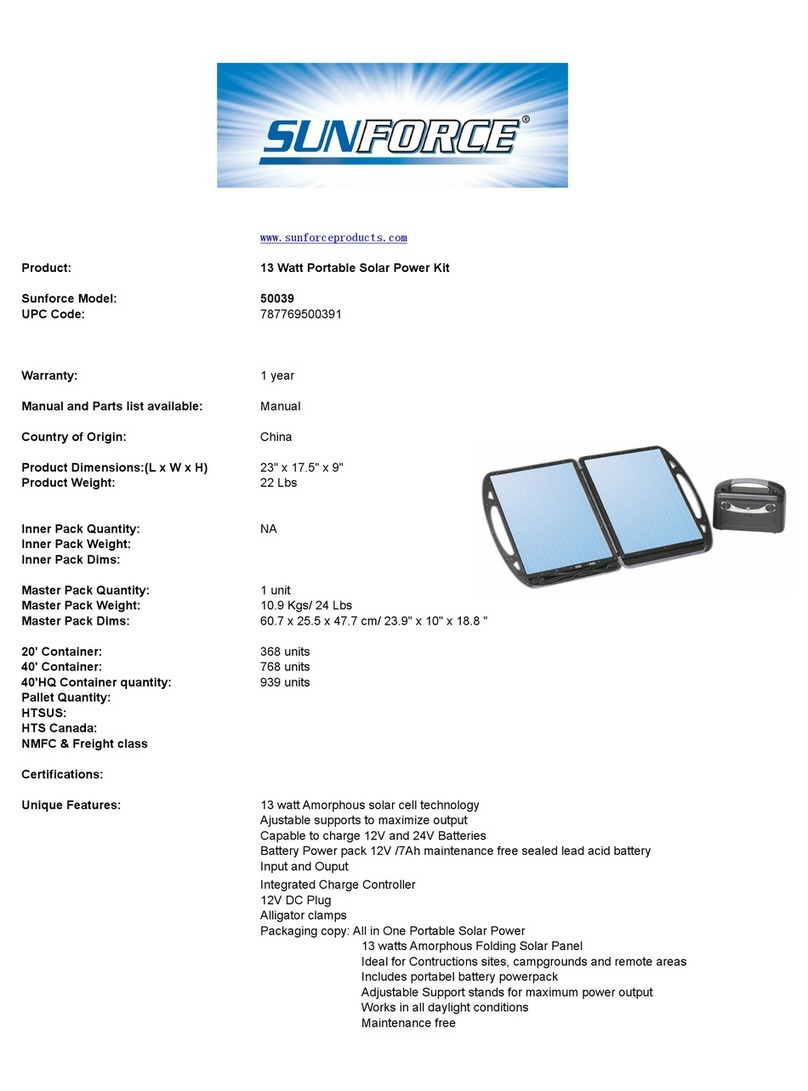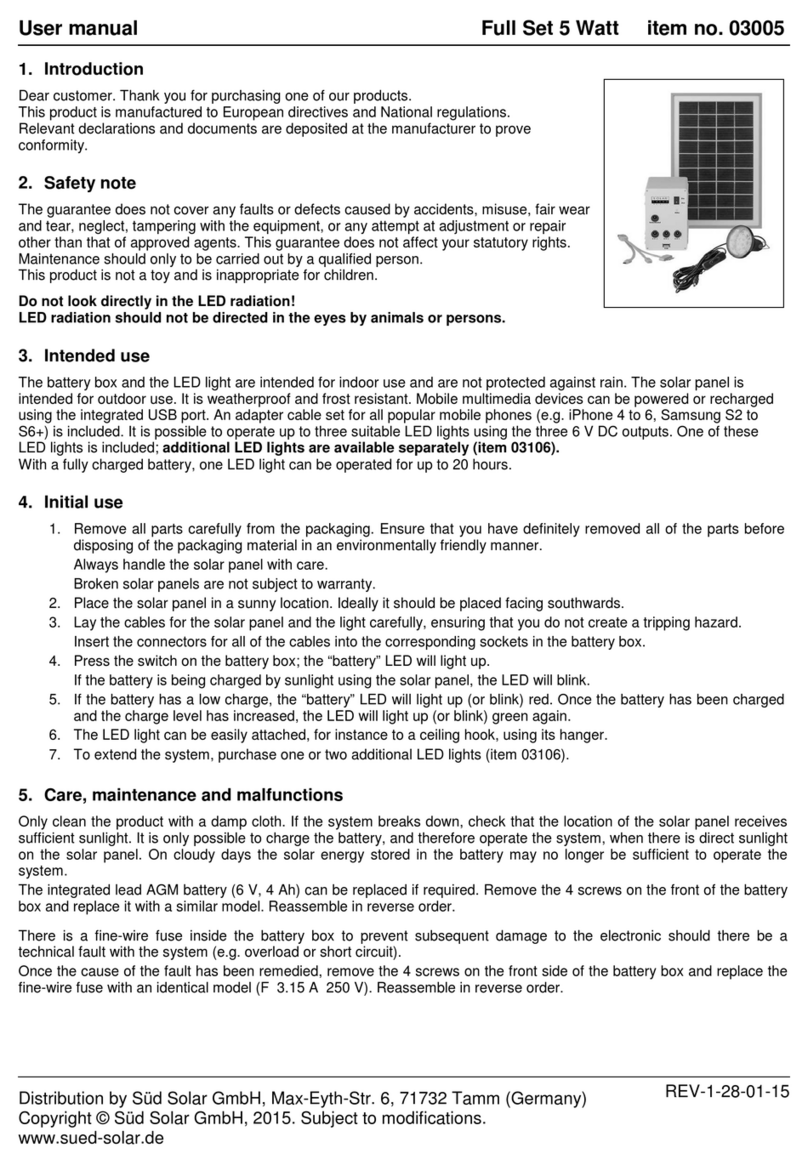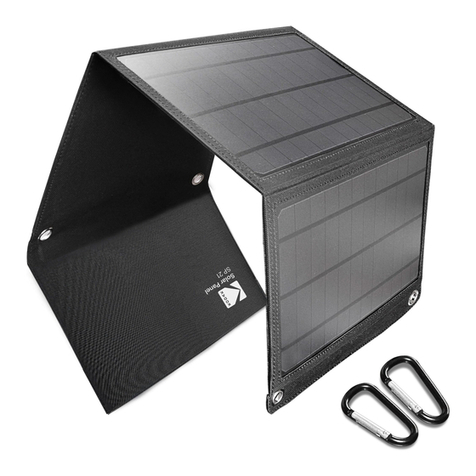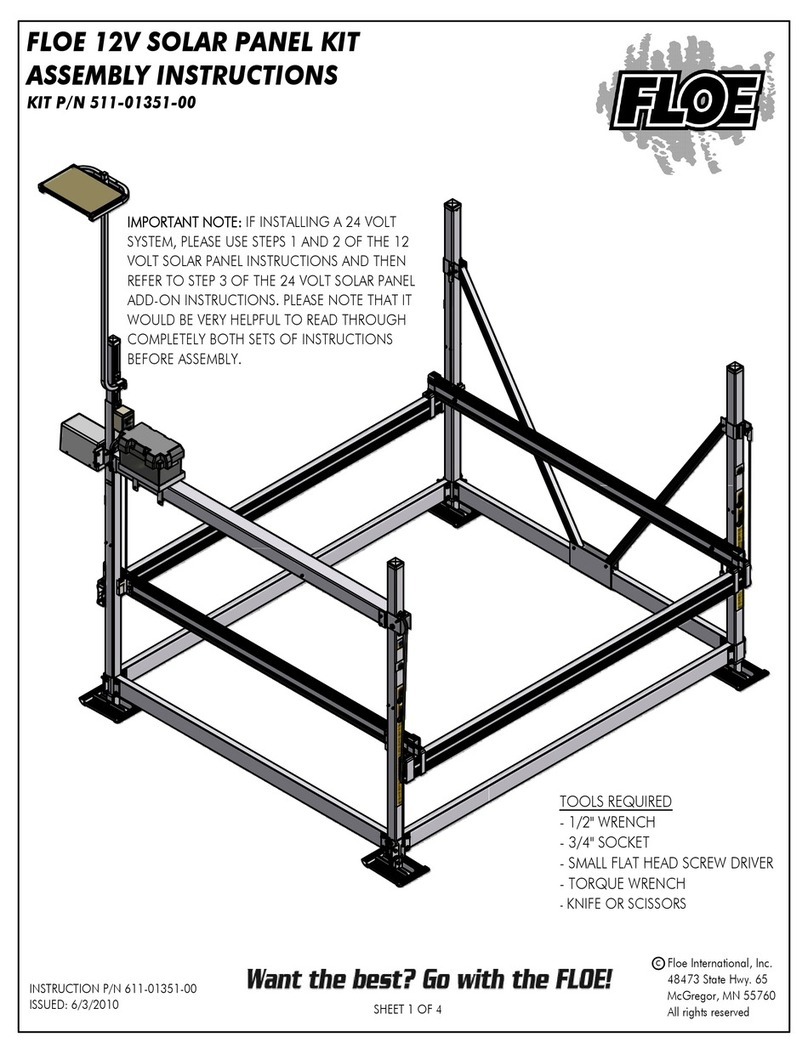
10
INSTALLATION
Unpacking the product
UNPACKING THE PRODUCT
The solar collectors are packed in various ways depending
on the number of units supplied:
A
In a pack of 1
B
Packages of 5 collectors
Pallet contents:
- collector
- documentation envelope containing certicate of
warranty and label with bar code.
b
Keep the front of the packaging and use it to shade
the glass tubes before the system is started up.
If the solar collectors are not going to be put into oper-
ation immediately, and there is any risk of their being
exposed to rain, do not use the packaging to shade
them as it is not water-proof.
b
The instruction manual is an integral part of the so-
lar connector. Once located, read it thoroughly and
keep it safe.
Handling
Once you have removed the outer packaging, proceed as
follows to unpack and handle the solar collector:
- Remove the PVC wrapping to free the solar collector
from the pallet
- Tilt the solar collector slightly and grip it at the four
points shown (A) to lift it.
- Use a hoist or other suitable lifting equipment to hoist
the solar collector on to the roof.
b
Wear suitable personal protective equipment and
use suitable safety devices.
a
Do not dispose of packaging material into the envi-
ronment, or leave it within the reach of children, since
it can become a potential hazard. Dispose of packag-
ing material in compliance with applicable legislation.
a
Do not lift the solar collector by its water ttings.
A
A
A
HANDLING
Installation






